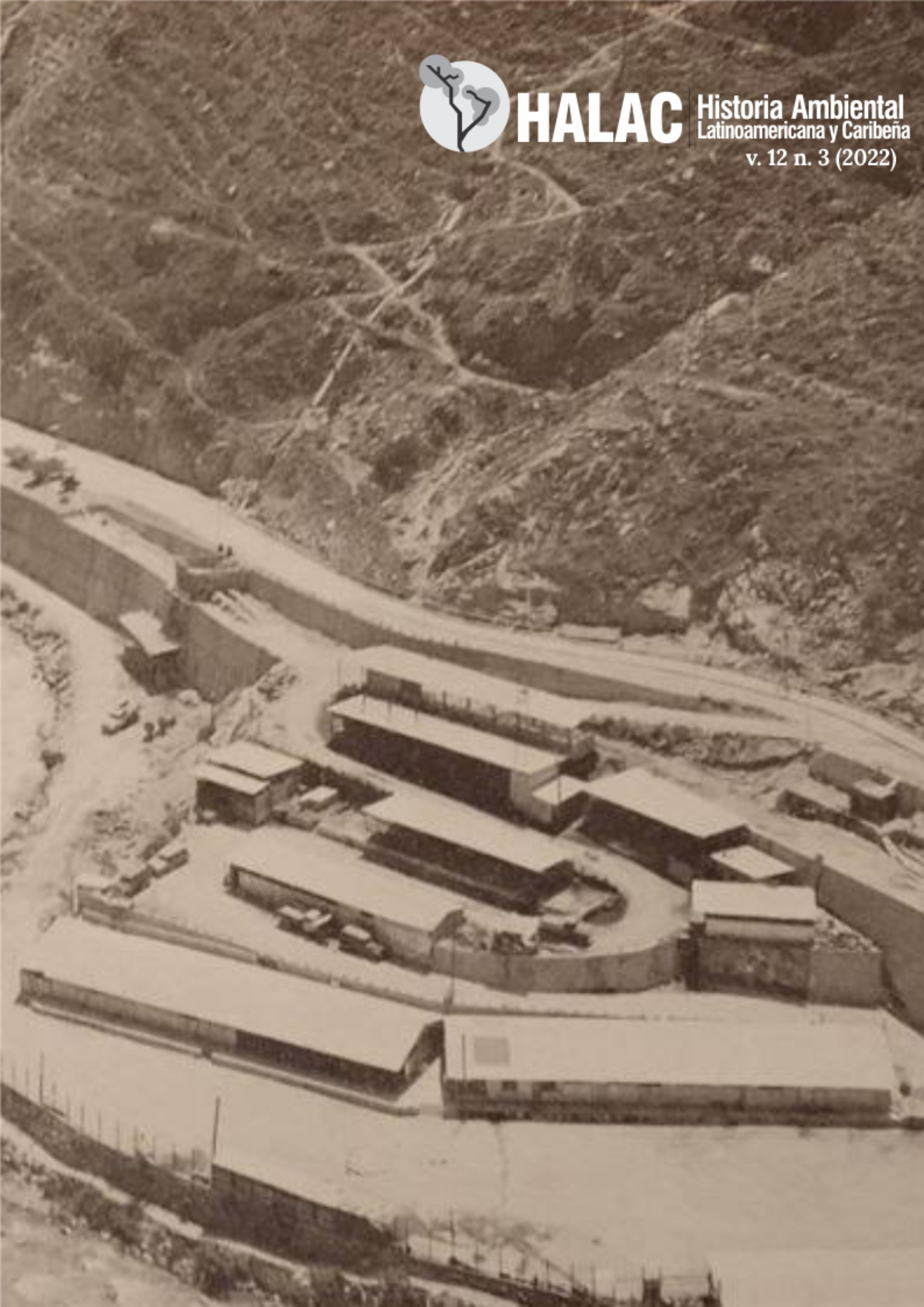Amazonian Communities: Shaping the Ethics of Cosmocentrism
DOI:
https://doi.org/10.32991/2237-2717.2022v12i3.p108-139Palabras clave:
Amazonia, integrated cosmos, colonialism, Peru, political ethicsResumen
During millennia Amazonia has shaped herself as an integrated cosmos of tangible and intangible beings interweaved as a totality of relatives. This indigenous non-anthropocentric civilizational construction can be better defined by the neologism cosmocentric rather than contemporary ecological terms such as biocentric or geocentric, which emphasize exclusively the materialistic component of the whole system. Colonial and capitalist occupation of Amazonia portrayed and actively reconfigured a manageable “social reconstruction” of Peru’s Amazon Rainforest –La Selva, imposing a new ontology devoid of any ethical concerns. This article will explore the ethnic and political journey of Indigenous Amazonian Communities since the early 1960s to restore a pre-modern and post-modern environmental, cultural, social and ethical conception and practice of Amazonia.
Citas
Frédérique Apffel-Marglin. 2011. Subversive Spiritualities. How Ritual Enact the World. Oxford-New York: Oxford University Press.
César Calvo. 1981. Las tres mitades de Ino Moxo y otros brujos de la Amazonia. Iquitos, Perú: Proceso Editores. English translation by Kenneth A. Symington: César Calvo. 1995. The Three Halves of Ino Moxo. Teaching of the Wizard of the Upper Amazon. Rochester, Vermont: Inner Traditions International.
De Martino, Ernesto. 1948. Il mondo magico. Prolegomeni a una storia del magismo. Torino: Einaudi.
Philippe Descola’s doctoral dissertation (1993) was published as Les Lances du crepuscule, Paris: Librairie Plon (The Spears of Twilight: Life and Death in the Amazon Jungle. 1996. New York: The New Press)
Philipp. Descola. In the Society of Nature. A Native Ecology in Amazonia. 1996. Cambridge, U.K.: Cambridge University Press
Philippe Descola and Gísli Pálsson (Eds.) 2004 (1996). Nature and Society. Anthropological Perspectives. London and New York: Routledge.
Richard Evans Schultes and Albert Hofmann. 1992. Plants of the Gods. Their Sacred, Healing and Hallucinogenic Powers. Rochester, Vermont: 1992.
Martin Heidegger, Discourse on Thinking, trans. John M. Anderson and E. Hans Freund. New York: Harper & Row, 1966, cited in Tedlock Dennis and Barbara Tedlock (Eds.), Teachings from the American Earth. Indian Religion and Philosophy. New York: Liveright, 1975.
Carl Gustav Jung: https://carljungdepthpsychology.wordpress.com/2016/08/24/carl-jung-and-eros-anthology/ (viewed on November 8, 2016).
Tim Ingold. 2007 (2000). The Perception of the Environment. Essays in Livelihood, Dwelling and Skill. London and New York: Routledge.
Kawsak Sacha-The Living Forest. An Indigenous Proposal for Confronting Climate Change. Presented by the Amazonian Kichwa People of Sarayaku, COP 21, Paris November 30 - December 11, 2015.
Elen Mihas (with Gregorio Santos Pérez and Delia Rosa Rodríguez) 2014. Upper Perené Arawak Narratives of History, Landscape, and Ritual. Lincoln and London: University of Nebraska Press.
Jeremy Narby. 2006. Intelligence in Nature. An Inquiry into Knowledge. New York: Jeremy P. Tarcher/Penguin Group.
Karl Polanyi. The Great Transformation. The Political and Economic Origin of Our Time. Boston: Beacon Press, 2001 (first edition 1944, second edition 1957).
F. David Peat. 2014. Synchronicity. The marriage of matter and psyche. Pari, Italy: Pari Publishing Sas.
F. David Peat. 2002. Blackfoot Physics. A Journey into Native American Universe. Boston, MA/York Beach, ME: Weiser Books.
F. David Peat. 1987. Synchronicity. The Bridge between Matter and Mind. New York-Toronto-London-Sidney-Auckland: Bantam Books.
Michael Pollan and Jesse Jacobs, “Tesis, antithesis y fotosíntesis” and Pollan’s interview with researcher Stefano Mancuso of the International Laboratory of Plant Neurobiology of the University of Florence, Italy; see: https://elestadomental.com/revistas/num5/tesis-antitesis-y-fotosintesis; http://www.newyorker.com/magazine/2013/12/23/the-intelligent-plant.
Radin, Paul, Carl Gustav Jung & Karl Kerenyi. 1965. Il briccone divino. Milano: V. Bompiani. English edition: Paul Radin. 1956. The Trickster: a Study in Native American Mythology. New York: Schocken Books (commentaries by K. Kerenyi and C. G. Jung).
Reichel-Dolmatoff. Shamanism and art of the Eastern Tukanoan Indians. 1987. New York: E. J. Brill.
Laura M. Rival & Neil L.Whitehead (Eds.) 2001. Beyond the Visible and the Material. Oxford, U. K. : Oxford University Press.
Laura M. Rival. 2002. Trekking Through History. The Huaorani of Amazonian Ecuador. New York: Colombia University Press.
Laura Rival, “Blowpipes and spears. The social significance of Huaorani technological choices” in Philippe Descola and Gísli Pálson op. cit.
Técnicos Bilingües Unidad Acayucan & Stefano Varese (Coordinador). 1985. Agua, Mundo, Montaña. Narrativa Nahua, Mixe y Popoluca del Sur de Veracruz. Tlahuapan, Puebla: Premia Editores.
Robert Tindall. 2008. The Jaguar that Roams the Mind. An Amazonian Plant Spirit Odyssey. Rochester, Vermont: Park Street Press.
Varese, Stefano and Moisés Gamarra, “ Deux versions cosmogonique campa: esquisse analytique” in Annales. Économie, Societé, Civilisations. Anné 1976, vol 31, nº 3, pp. 469-480.
Stefano Varese, “The Territorial Roots of Latin American Indigenous Peoples’ Movement for Sovereignty” in Hagar.International Social Science Review. Vol 2 (2) 2001 (201-217).
Stefano Varese, “Language of Space” in John Brown-Childs.2003. Transcomunality. From the Politics of Conversion to the Ethics of Respect. Philadelphia: Temple University Press.
Stefano Varese y Michael Grofe, “Notas sobre territorialidad, sacralidad y economía política bennizá/binnigula’/beneshon” in Mexican Studies/Estudios Mexicanos. Vol. 23 (2), Summer 2007.
Stefano Varese. 2006. Witness to Sovereignty. Essays on the Indian Movement in Latin America. Copenhagen: International Work Group for Indigenous Affairs.
Stefano Varese. 2006. La sal de los cerros. Resistencia y utopia en la Amazonia peruana. Lima: Fondo Editorial del Congreso del Perú (Cuarta edición). There are three more editions in Spanish (Lima 1968, Lima 1973, La Habana, 2011), one in English (U of Oklahoma, 2002) and one in French (l’Harmattan, Paris).
Descargas
Publicado
Cómo citar
Número
Sección
Licencia
Derechos de autor 2022 Stefano Varese

Esta obra está bajo una licencia internacional Creative Commons Atribución-NoComercial 4.0.
Esta revista ofrece acceso libre inmediato a su contenido, siguiendo el principio de que disponibilizar gratuitamente el conocimiento científico al público proporciona mayor democratización mundial del conocimiento.
A partir de la publicación realizada en la revista los autores poseen copyright y derechos de publicación de sus artículos sin restricciones.
La revista HALAC sigue los preceptos legales de la licencia Creative Commons - Atribución-NoComercial 4.0 Internacional. 




